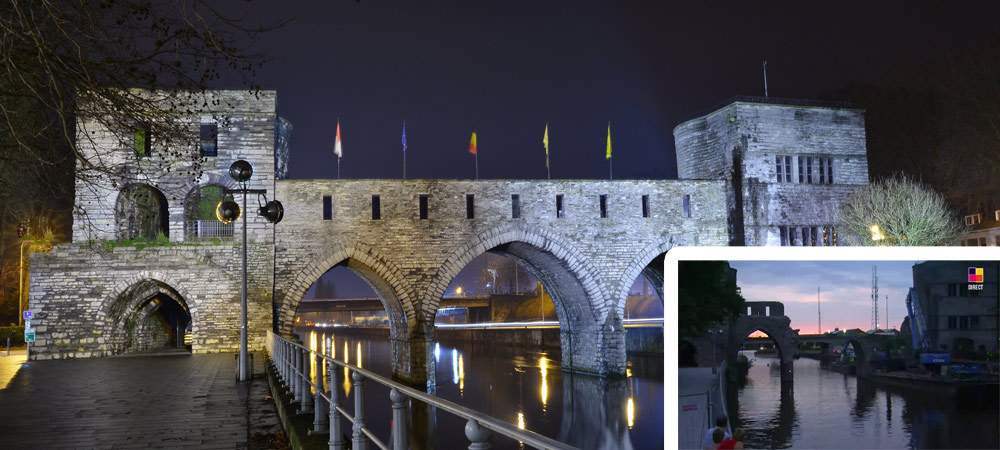The official website of the tourist board of the city of Tournai, Belgium, lists the Pont des Trous (“Bridge of Holes”), a medieval, 13th-century bridge described as “one of the most prestigious vestiges of medieval architecture in Belgium,” in its top ten must-see attractions: we can now safely speak in the past tense, because the Pont des Trous, built between 1281 and 1304 (as well as one of only three remaining thirteenth-century military bridges in the world), was partly torn down to allow larger boats to pass under its magnificent Gothic ogival arches than would normally have been able to pass.
Specifically, precisely the three central arches of the bridge spanning the Escaut River (Scheldt in Flemish) have been dismantled, in a plan that also includes widening the riverbed near the city so as to allow the passage of boats of up to two thousand tons, which are currently prevented from passing through there precisely because of the bridge.
Dismantling of the arches began Friday morning, at 6 a.m., after years of debate about what to do (it is also possible to follow the work live on the web). The stones (partly original, partly not: in fact, the bridge was remodeled after World War II, due to damage suffered during the bombing: only the side towers have never been touched since the 14th century) have been preserved, because the bridge will be rebuilt starting in 2020, albeit with the arches made higher. Authorities have already let it be known that the bridge will not be rebuilt identical to the one that is being torn down in these hours, although the shapes will be similar. The end of the work is scheduled for tomorrow.
Of course, in Belgium there is mounting protest over the demolition of a historic bridge, moreover one of the symbols of its city. “Belgium,” commented Didier Rykner in the newspaper La Tribune de l’Art, “is preparing to demolish in peacetime what was partially destroyed in wartime. And even if the reconstruction will be conducted on time, this is revolting vandalism. Remember that the bridge is classified as a historical monument.” Rykner wonders what will happen in the future, after the bridge is torn down: and indeed the operation sets a very dangerous precedent, not least because this is not the only case in which an administration proposes to tear down or demolish or move ancient works for reasons of viability (we also saw this in Italy, when a few months ago the mayor of Pisa proposed to demolish three arches of the Medici aqueduct to make way for the new ring road).
As the work began, groups of people and members of heritage associations gathered on the banks of the Scheldt to watch the sad spectacle unfold before their eyes. Others included Belgium’s Minister of Energy and Environment, Marie-Christine Marghem, who lamented the “lack of empathy” for the community on the part of the Tournai municipal administration (which was responsible for the decision to demolish the bridge). The minister, a native of Tournai, wrote that “since a resident of Tournai lives his city in joy and pain, I have been here at the foot of the Pont des Trous since dawn to see how institutional spoilers attack a monument without following a protection protocol, under the dark eye of the small local potentates.” Criticism is also levelled at how the work is being conducted: “First of all,” the minister continued, “I don’t see any numbered stones. Are we surprised? What’s more, no word of empathy has been addressed to the population, which in a popular consultation had already expressed its love for its roots, identity, and history.”
Read also: Pont des Trous, why it is wrong to demolish it (even though it was rebuilt after the war)
 |
| In Belgium they tear down medieval bridge to allow large boats to pass. In pieces 13th-century work |
Warning: the translation into English of the original Italian article was created using automatic tools. We undertake to review all articles, but we do not guarantee the total absence of inaccuracies in the translation due to the program. You can find the original by clicking on the ITA button. If you find any mistake,please contact us.